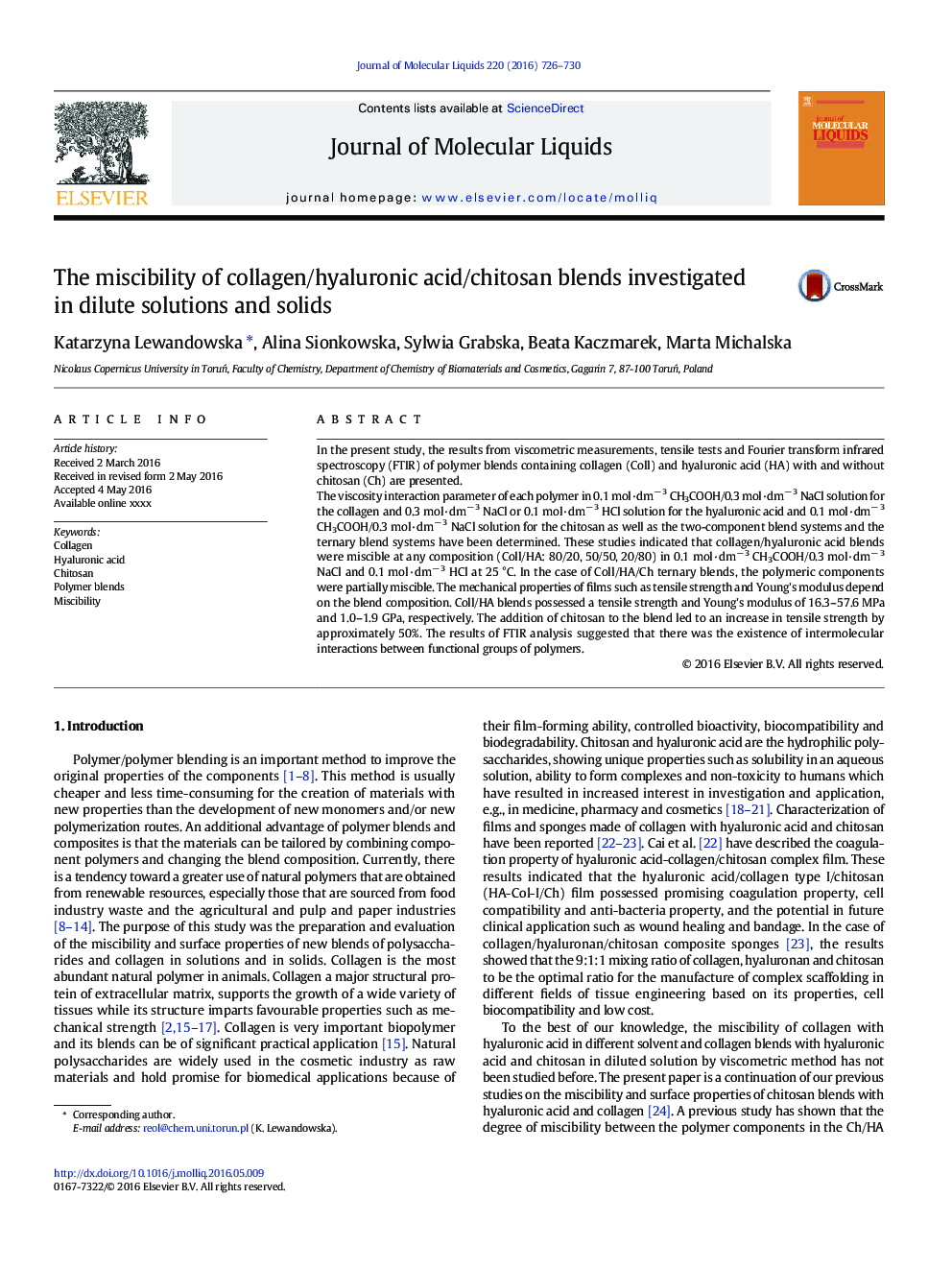| Article ID | Journal | Published Year | Pages | File Type |
|---|---|---|---|---|
| 5409736 | Journal of Molecular Liquids | 2016 | 5 Pages |
Abstract
The viscosity interaction parameter of each polymer in 0.1 mol·dmâ 3 CH3COOH/0.3 mol·dmâ 3 NaCl solution for the collagen and 0.3 mol·dmâ 3 NaCl or 0.1 mol·dmâ 3 HCl solution for the hyaluronic acid and 0.1 mol·dmâ 3 CH3COOH/0.3 mol·dmâ 3 NaCl solution for the chitosan as well as the two-component blend systems and the ternary blend systems have been determined. These studies indicated that collagen/hyaluronic acid blends were miscible at any composition (Coll/HA: 80/20, 50/50, 20/80) in 0.1 mol·dmâ 3 CH3COOH/0.3 mol·dmâ 3 NaCl and 0.1 mol·dmâ 3 HCl at 25 °C. In the case of Coll/HA/Ch ternary blends, the polymeric components were partially miscible. The mechanical properties of films such as tensile strength and Young's modulus depend on the blend composition. Coll/HA blends possessed a tensile strength and Young's modulus of 16.3-57.6 MPa and 1.0-1.9 GPa, respectively. The addition of chitosan to the blend led to an increase in tensile strength by approximately 50%. The results of FTIR analysis suggested that there was the existence of intermolecular interactions between functional groups of polymers.
Related Topics
Physical Sciences and Engineering
Chemistry
Physical and Theoretical Chemistry
Authors
Katarzyna Lewandowska, Alina Sionkowska, Sylwia Grabska, Beata Kaczmarek, Marta Michalska,
